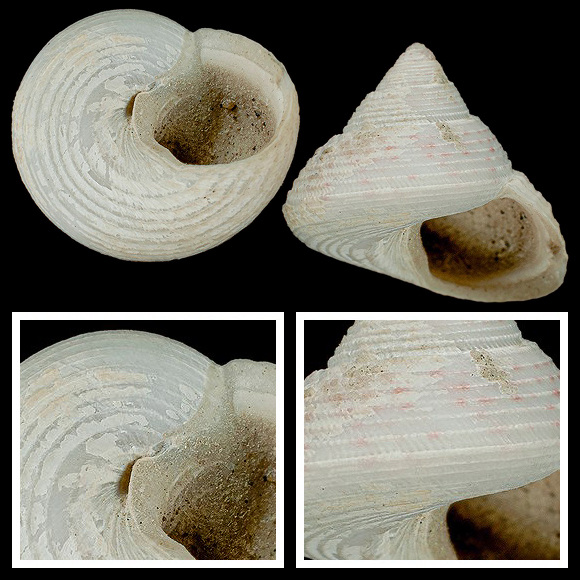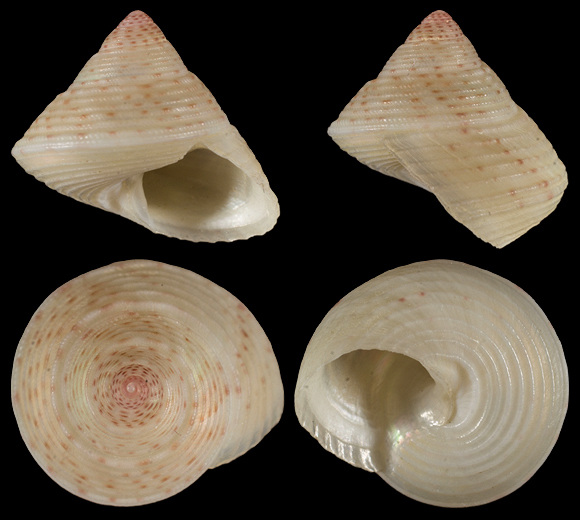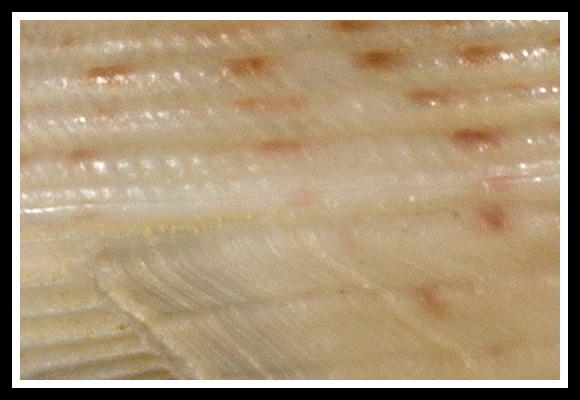
Eastern Mediterranean, around deep water cold seeps. The shell differs from that of miliaris, the only other mediterranean species, by its less flat whorls and by the presence of an umbilical chink. The specimen pictured here shows an uncommon form, where the base of the last whorl is more rounded than in average shells. – 2000m deep, Amsterdam mud volcano, Anaximander Ridge, SW. Turkey. 8,5mm. Original pictures provided by A. Nappo (IT) – (CC BY-NC-SA).

« This species is dedicated to Myriam Sibuet, who has extensively contributed to the knowledge of deep-sea faunas and in particular has supervised the biological collections in ‘Medinaut’. » – S. Gofas: “Geographical Differentiation In Clelandella (Gastropoda: Trochidae) In The Northeastern Atlantic”, Journal of Molluscan Studies vol.71(2), Oxford 2005, p.141. – Above and below: a specimen with flatter whorls. 2030m deep, Amsterdam volcano. 7,5mm. Original pictures provided by M. Caballer for the MNHN Paris. – (CC BY).

Sculpture: « on the spire approx. 5-7 relatively flat spiral cords, reticulated by very oblique axial threads, spiral cords relatively weak for the genus, mostly not stronger than the axial threads, basis with relatively broad, flat, transversally sulcate spiral cords; shell relatively thin; white, cream-colored or yellowish, mostly speckled and/or flamed with brown or reddish (distinguished from the other species of the genus by the weak, reticulate sculpture). » – R. Kapeller: European Mollusks.